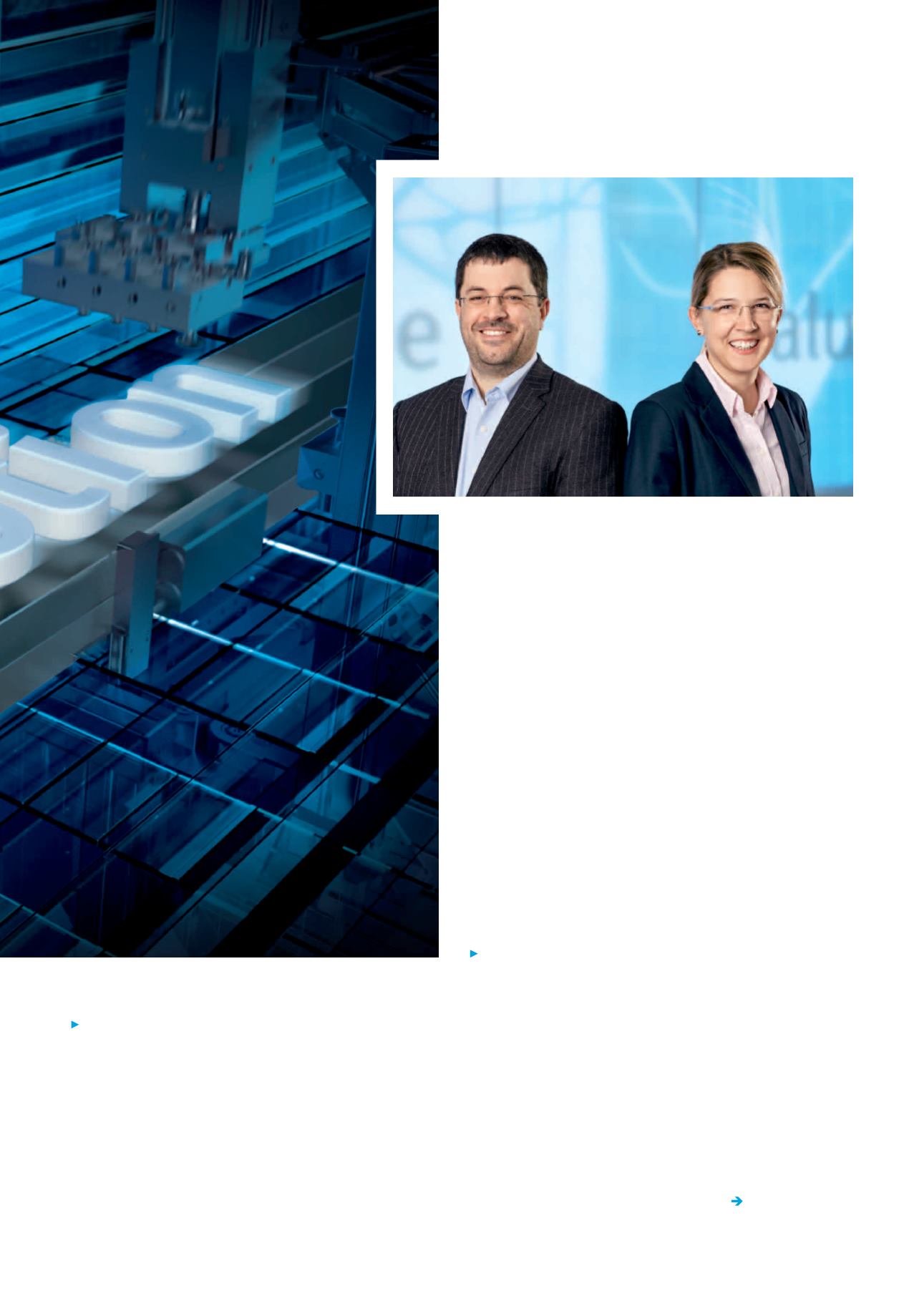

trends in automation
: What attracted you both to this tech
nology – how did you first come into contact with it?
Dr. Susanne Krichel:
The first time I saw a superconductor was
at an open day hosted by the physics institute at my university.
It was wrapped in a cooling nitrogen package and moved con
tactlessly over a magnetic rail. At the time I could never have
imagined that one day I would be working with this technology
at Festo, with the aim of actually developing a product. So I am
delighted to have the opportunity to exploit the potential of this
technology together with my colleagues.
Stephan Schauz:
Before SupraMotion, my department was
working on new processes in technical ceramics, among other
things. Because the semiconductors we were using at the time
are also made of a ceramic material, preparing a study of this
technology became part of my responsibilities, which now also
include other areas of superconductivity and magnet technology.
trends in automation
: What are the technical characteristics
of this technology and what is the development goal? What
types of products are you hoping to create?
Schauz:
SupraMotion utilises the effect of saving spatial fields,
specifically in the case of so-called second-generation supercon
ductors. The position of any magnetic field relative to the super
conductor can thus be saved by the superconductor and used
without the need for additional sensors or controllers. The de
velopment goal is to provide our customers with products and
functional units that enable them to enjoy the benefits of this
technology in new applications without having to understand its
complexity. They should in principle be able to integrate our
SupraMotion products into their automation environment just
as they could any other product from Festo.
Stephan Schauz and Dr. Susanne Krichel
head the SupraMotion project team.
1.2017
trends in automation
Compass
8
–
9


















